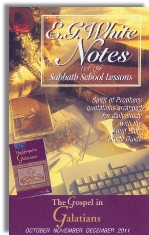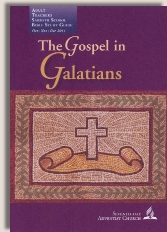|
||||||||||||||
Commentary on "The Two Covenants"
Day 3: Monday, November 28, 2011 - The Abrahamic Covenant
Overview
Today’s lesson provides a very brief, cursory overview of the Abrahamic covenant.
Observations
Because the Abrahamic covenant is a crucial covenant to understanding this week’s passage and because it foreshadows the New Covenant, it is worth studying in greater depth. It is helpful to understand its historical context. Covenants were common in the near east during biblical times. Covenants were frequently used to establish lordship. A suzerain would make a covenant with his vassals that normally contained three parts:
- Promise
- Condition
- Sign
The promise might be something like the suzerain promising not to kill the conquered vassals. Although some covenants might be unconditional, i.e. the suzerain would do what he would do regardless, most held some sort of condition for fulfilling the promise. So the suzerain might promise not to kill the conquered vassals if they provided him with a yearly tribute of grain and wine. A sign was setup as a way of showing that the vassals were in the covenant with the suzerain. The sign was often arbitrary and could be just about anything such as an earring in the left ear, an ankle bracelet, or almost any other external sign. The Covenant was “cut” with blood. The parties to the covenant would typically cut animals in half and lay the pieces on either side of a depression or path. The blood would then run down into the depression and both parties to the covenant would walk through the pooling blood. The blood would splash onto their feet and ankles as a symbolic way of saying “If I break this covenant, let my blood be spilled like these animals”.
We see a similar scenario acted out in Genesis 15. Abram had been waiting for years for an heir to fulfill God’s promise of making him a great nation. So Abram comes up with a “fleshy” solution. That is, a solution that could be accomplished on his own through his own power. Abram proposes his servant Eliezer be his heir. However, God does not accept this fleshy solution. God states that Eliezer will not be the heir and gives Abram a two part promise.
“And He took him outside and said, ‘Now look toward the heavens, and count the stars, if you are able to count them.’ And He said to him, ‘So shall your descendants be.’ Then he believed in the LORD; and He reckoned it to him as righteousness. And He said to him, ‘I am the LORD who brought you out of Ur of the Chaldeans, to give you this land to possess it....On that day the Lord made a covenant with Abram, saying, ‘To your descendants I have given this land, from the river of Egypt as far as the great river, the river Euphrates’" Genesis 15:5-7, 17b (NASB)
God tells Abram that his descendants will be numerous and will possess the land. There is no condition to these covenant promises in the sense of Abram having to do something. Abram simply believes in the Lord and God credits that belief as righteousness. The Abrahamic Covenant is an "unconditional" covenant because God simply says what He will sovereignly do. Faith, not works, is the basis of this covenant. We see this underscored in the way in which God “cuts” the covenant. God has Abram cut several animals in half and lay them opposite each other. God then puts Abram into a deep sleep. God represents Himself as a smoking oven and flaming torch and passes between the pieces, not Abram. God is symbolically saying, “Abram, I am making this covenant, not you. It will be my blood that is spilled, not yours”. The covenant promises could only be accomplished by the Spirit, not by the flesh. The sign of the covenant, which we will explore in the next lesson, emphasizes this point.
Summary
- Ancient covenants typically included a promise, a condition, and a sign.
- God promised Abram many descendants who would possess the land.
- The promises of the Abrahamic covenant were unconditional.
- The covenant was “cut” by God, not Abram.
- Abram simply believed in the Lord and it was credited to him as righteousness.
- The Abrahmic covenant was a covenant of faith.
Copyright 2011 BibleStudiesForAdventists.com. All rights reserved. Revised November 6, 2011. This website is published by Life Assurance Ministries, Glendale, Arizona, USA, the publisher of Proclamation! Magazine. Contact email: BibleStudiesForAdventists@gmail.com.
The Sabbath School Bible Study Guide and the corresponding E.G. White Notes are published by Pacific Press Publishing Association, which is owned and operated by the Seventh-day Adventist church. The current quarter's editions are pictured above.
Official Adventist Resources
Standard Edition Study Guide Week 10
Teacher's Edition Study Guide Week 10
Easy Reading Edition Study Guide Wk 10
Search the Complete Published Ellen G. White Writings
Please Support This Project


